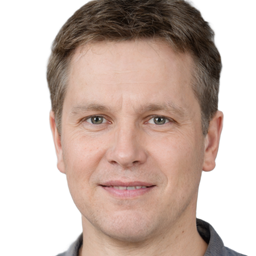Some of the main questions in the assessment are:
- Evaluate the skill and knowledge with the behavior of
- Give all the factors and evaluation of the business performance of KERING.
- What is the high-performance methods in all such working evaluation by KERING
- Explain performance management.
INTRODUCTION
Developing employees means increasing the performance capacity of the organization. Measured improvement in employees' abilities to contribute to specific results and build a culture within the organization. Using the knowledge, skills, and behaviours for the growth of the organisation and for the better performance of the employees (Kaunnil, 2013). Developing individuals and teams is achieved by constantly providing them with proper education and training programs. Encourage employees to improve their skills through training and by communicating with coworkers. KERING is an international luxury group based in Paris, France. It develops an ensemble of house in fashion, leather goods, jewellery a,, nd watches. It uses HR policy and focuses on combating harmful traditional practices organization provides a source for its employees to develop individual teams and the organization to achieve its organizational goals.
TASK 1
P1 Professional knowledge, skills, and behaviours that are required by HR professionals
Knowledge
It is an awareness, understanding, or familiarity of something or someone that includes skills, information, and descriptions acquired through the help of education or experience. It is theoretical and practical knowledge or understanding of the particular subject (Appiah,2013). The knowledge required by HR professionals is
Technical knowledge
Technical knowledge includes both accounting and tax. The manager of Kering should have proper knowledge about bookkeeping, data entry, journals, leand dgers for the maintenance of records in business. It helps in the proper keeping of books and data.
Business awareness
The manager must be aware of its businessand activitytoo know the situation of the firm in the market. It helps in resolving conflicts that may arise in the future through awareness.
Ethical standards
Ethical standards are very important forevery organisation. They are set rules, values, principles, and moralss required in business. As a king has set ethical standards for its business for survival in the market.
regulation and compliance
The proper regulation of laws and rules should be followed along with compliance with objectivity and integrity. The manager should check about following regulations in business at Kering (CICMA,2012.
System and process
Kering has set proper systems and processes in business, and accordingly, they work for achieving results.
Skill
It includes activities or work with special knowledge and training in a particular field. It is the capacity and ability of an individual to gain from sustained, systematic efforts involving ideas and skills to carry out complex work. The skills required by HR professionals are:
Analysis
professionals should create and interpret information and use that information effectively.
Communication
It is the most important skill required in HR professionals for relevant information and cocommunicatingtakeholders in verbal and written formats.
Leadership
The manager at Kering should possess this skill to be committed to their profession and job profile.
Planning and prioritization
Before doing any work, planning is a must. Kering plans all its tasks before performing them and works accordingly.
Produces quality and accurate information
The application of skill,, which can be accounting or ta,x delivers high-quality services and goods, accurate data and information to users at Kering ( Dan, 2016).
Teamwork and collaboration
Teamwork and collaboration at Kering help in working effectively with other employees, and buildprofessional relationships at internal and external organisations.
Uses systems and Every employer and staff member should be aware of the organisation systems and processes. This easily helps in the achievement of goals and objectives.
Behavior
It is manners or actions made by a group, individual, system, with the surrounding or themselves or the physical environment (DAVADA2018). It is the way through which one acts on others. The behaviours required by HR professionals are:
Adaptability
The company should be able to listen and learn to accept changing and working environments. This helps in maintaining standards in a dynamic world. Kering should work as per the need and demandss of consumers.
Adding value
The positive contribution to business influencess the decisions of the firm,, which add value to the market. There should be continuouss improvemeninon performance of employees at Kering.
Ethics and integrity
There should be honesty and principles in actions and interactions thatrespect others and achieve ethical requirements. (Enyioko,2012.) This behavior helpss in kering for achieving results and maintaining standard.
Proactivity
It means taking responsibility and being able to work under pressure in case of an emergency. Kering has lots of work profiles, so they need proactive employees who can work for them anytime; this reflects positive behaviour.
Professional scepticism
Employees should possess professional behaviour for performing tasks, engaging in achieving maximum results.
P2 Personal skills audit to identify appropriate knowledge, skills, and behaviour, and develop a professional development plan
It is the process of comparing an individual's strengths on the criteria of past and future development of the person. Personal audit's point is been discussed.
Examine the present: It means to analyse the current skills based on behaviour, functional, and technical knowledge. (Faisal,2013)
Look ahead to the future: The person needs to improve their knowledge and skills as per the future requirements.
Know the gap: It means to plan capabilities and analyse the skillss and knowledge that will be acquired for the future. Points to be considered while identifying the gap rate aree discussed.
- No current skills and knowledge.
- Skill and knowledge are less but not proficient
- Skill competent and gaining knowledge
- Expert with a high degree of skill and knowledgA personalal skill audit helps to identify a person's skill and knowledge. My personal skills audit as a Trainee is isdetermine as.
|
Requirements |
Personal audit ( rating scale: 0- 10) |
GAP |
Remedial action |
Deadline for remedial action |
|
Innovative Thinking |
9 |
I don't have creative ideas while working, and I try to bring innovation to my plans. |
I used to consume content that iss out of my comfort zone and write a 500-100 article on it. |
3 months |
|
Technical Knowledge |
7 |
Didas does not have from technical background, so it was difficult for me to get technical knowledge. |
I need to improve this by reading technical books, reading online tutorials,, taking classes. |
5 months |
|
Communication skills |
9 |
I am not fluent in public speaking and need to enhance my vocabulary. |
To enhance my communication skills, I need to learn new words and refer to a dictionary. |
On going |
|
Collaboration |
6 |
I am not able to coordinate with people under pressure. I feel hesitant while interacting with new people. |
To improve this, I need to communicate with new people. |
2 months |
|
Curious |
9 |
I am not a passionate learner. |
I acquire this by learning more and being dedicated to my work. |
On going |
|
Decisive learner |
7 |
I can't analyse the data and information. |
I can improve this by giving myself feedback |
3 months |
After determining my strengthss and weaknesses, I can overcome my weaknesses by developingof my personal skills. According to my personal development plan discussed below.
|
Professional Development Plan |
|||||
|
Objectives |
Resources required |
Issues faced at the time of achieving objectives |
Success criteria |
Target dates |
|
|
Decisive learner |
Learning from feedback, innovative ideas, and thinking. |
I was unable to make quick and appropriate decisions. |
Have adequate knowledge about the topic. |
1 ½ months |
|
|
Collaboration |
Working in a team and a group |
I do not cooperate with teams and subordinates when performing tasks. |
Communicate with new people and work in a team. |
2 months |
|
|
Technical knowledge |
Online tutorials, classes, and technical books |
Due to a lack of knowledge about the technical field,, I find it difficult to solve the problem. |
It helps in solving problems related to the technical field. |
3 Months |
|
TASK 2
P3 Differences between organisational and individual learning, training, and development
Organisational learning
Organisational learning is defined as the process of creating, transferring, and retaining knowledge in an organisation. It keeps on improving from time to time through experience gained. From experience, it develops knowledge that helps in the betterment of business. The examples are: production increment, developing relations with investors. Knowledge can be of four units, which are: individual, group, inter-organisational, nd organisational. Organisational learning is measured through the learning curve (Jackson,2013). It is the curve that shows the relationship of how an organization produces products, manages efficiency, and quality.
Read more: Assignment on Health Issues.
Individual learning
Individual learning is the capacity to build knowledge through individual reflection of sources and external stimuli in the other'ss environment. It is the way through which an organisation improves the capacity of individuals to adopt learning opportunities and recognise more advantages.
It helps in developing a person's potential, meeting changing demand, and effective understanding.
Training and Development
It is defined as an educational process including concepts, sharpening of skills, and attitudes to enhance and improve the performance of staff.. It is a subsystem of the company that focuses on improving the performance of groups and individuals. It is very important to have regular training and development programmes for their workers (Kaplan,2014). As the environment is dynamic, to survive in that dynamic world, new skills and knowledge should be learned. It helps in developing skills, productivity increment, optimum utilisation of resources, and improving quality, safety. It is required for job responsibility to test new methodology in the business.
Differences between Organisational learning and Individual learning
|
Organisational learning |
Individual learning |
|
It is the process of using and sharing knowledge within the organisation.
|
It is a method of teaching content, instructional technology, and the pace of learning.
|
|
It helps in improving organisational productivity and efficiency overall. |
It helps in measuring individual objectives. |
|
Through observation learner learns. |
Learners find it cost-effective. |
Differences between training and development
|
Training |
Development |
|
It is for an operator's user. |
It is for executive users. |
|
Training is a reactive process.. |
Development is a proactive process.. |
|
It aims at developing skills. |
It aims at developing personality |
|
Its process is short-term in nature |
Its process is continuous |
|
The main objective is to meet the present needs of staff. |
The main objective is to meet the future needs of staff. |
|
Management takes the initiative |
The individual takes the initiative. |
P4 Need for continuous learning and professional development to drive sustainable business performance
Continuous learning and professional development
Continuous Learning refers to the capacity of enhancing the skills of learning by upgrading skills and expanding knowledge. It helps to bring flexibility in work and adjust to the situations of the organisation. On an individual basis,, it refers to the methods and strategies an individual adopts for expanding knowledge in his daily routine. In the workplace, it is important for teams as well to adjust to the changing working environment (Kaunnil,2013).
Professional development is the process of improving and enhancing the skills of employees by giving them education and training benefits in the workplace. It helps to encourage and boost the morale of the employees.
Kolb's Learning Styles and Experiential Learning Cycle
This cycle of theory includes two different levels: a four-stage cycle of learning and four separate learning styles.
The Experiential Learning Cycle
This theory is described by a four-stage learning cycle in which the learner has to go through all the stages for effective learning.
- Stage 11 Concrete Learning: This is the initial stage of the learning cycle in which a new experience is encountered and relates to experiences faced in daily life.
- Stage 22 Reflective Observation: The second stage of the experiential learning cycle is reflective observation. It occurs when a person has new experiences (Lama, 2014). Under this,the experiences are being observed and reflected upon, and can create confusion if the ideas do not suit.
- Stage 33 Abstract conceptualization: Under this stage, new ideas or modificationsof an existing idea aredone. This theory also resolves confusion if created in the reflection stage.
- Stage 4 Active Experimentation: After following all the above stages, the learner adopts the ideas and implements them to analyse the results. It can also be termed as a practising stage.
Learning Styles
Learning styles are adopted according to the situation and preferences of a person. Brief descriptions of the four Kolb learning styles are discussed.
Diverging:
Under this style, people are sensitive and they look at things in their own way and are best at watching situations from different perspectives, they do not collect information or use ideas to resolve problems.
Assimilating:
Under this style, Ideas and concepts are given more importance than people. People involved in this style are less focused on people and concentrate more on ideas. This style brings effectiveness to information.
Converging:
Under this style practical use of ideas and theories is done. People involved in this style focus on technical tasks and problems rather than interpersonal issues, a nd they tend to experiment with new ideas and techniques and work with practical applications. They are quick decision-makers because they find answers to questions or problems.
Accommodating:
Under this style, people depend on others for gathering information rather than analysing their ideas to the situation (Lin, 2012. They rely on intuition rather than thinking for themselves and implementing their ideas to the problems and are influenced by new challenges.
TASK 3
P5. HPW contributes to employee engagement and competitive advantage
HHigh-performancework
HPW means high-performance work. It is a group of different but interconnected human resource practices. HR practices such as selection, training, performance appraisal, and compensation are designed to enhance the effectiveness of employees. In Kering, the attitude of employees was examined job satisfaction, organizational commitment, and empowerment. HPW had a significant positive effect on these attitudes and enhanced the organizational citizenship behaviour of the employees ( Mishra,2015).In Kering, if the employees are not performing w,e ll according to the organization because they are not satisfied with their jobs and are not committed to the company. So, Kering, stop blaming employees and fix the systems if they want to improve attitudes, behaviour,,s and performance.
Employee engagement
It is an emotional attachment of the employees towards their colleagues and culture, place of work, job role, and position in the company. In Kering, the employees that connected to their positions deeply go the extra mile, are loyal, and perform to the best of their ability. Positive employee engagement is finding the best fit for the job or position. Better engagement provides better productivity to the company (Weerakkody,2012). When the employees are engaged at work in an organization, they feel a connection with the company. The employees believe that the work they are doing is important, and they work hard.
Competitive advantages
It has an identifiable part of the company's proposition that allows it to achieve a greater
degree of success than similar businesses in its industry. There are different types of competitive advantages, such as pricing structure, manufacturing capacity, access to contracts, and superior customer service.
Pricing structure
It is an approach in products and services pricing that defines various prices, discounts, and offers consistent with the organisation's goals and strategies (Zakari,2017). In the market m,,any companies sell the same or very sisimilarroducts,, and according to economics, the price for these products should be at an equilibrium.
Manufacturing capacity
It is known as production capacity. In Kering, it is a measure of the efficiency of production according to the demand. It is all about how they manage raw materials, employees time,es and storage annn a efficient way to equalize demand.
Customer Service
It means helping customers in a goodand friendly manner. In kacaringf it providess good customer service, it is ensure that the company produces a profit and delivers services and products that satisfy and please customers.
Importance of HPW
It is important for measuring and managing employees because it gives them the ability to work properly and efficiently. It helps in improving organisational performance, employee retention and loyalty, improved productivity, clear accountabilities, and cost advantages. The main importance of it is to ensure that the employee is carrying out their duties which are effectively and beneficial for the growth of the organisation. Its most important factor is to achieve the goal by better performance. Employees must be motivated, positive-minded minded and energetic, then they achieve their goal. It is important to cultivate their strength so that they perform effectively in the organisation.
TASK 4
P6 Different approaches to performance management that can create a high-performance culture and commitment.
Performance management
It is a process by which managers and employees work together to plan, monitor, and review an employee's work objectives and overall contribution to the organization. I promote and improve employees' effectiveness. I involve developing clear job descriptions and employee performance plans with results and performancindicatorssIinvolveds design effective compensation systems for recognizing those employees who are doing better and achieving their goals through performance plans. The primary focus of performance management lies in the achievement of results.
Approaches to performance management
In the organization, employee performance of employees is measured by assessing how much the contribution of employees to the growth of the organization. Kering uses different approaches to measure the performance of its employees. The five major approaches are as follows:
Performance management.
Comparative Approach
This approach providesranking to the employees according to their performance concerning that of others in the group. There are different techniques forthis approach, such as paired comparison, forced distribution,and graphic rating scale. IKeringng reward are providedd to the top performer and provide training and guidance this performerfoto promoteo higher managerial positions.
Attribute Approach
In this approach,, the employee is rated based on problem-solving skills, Teamwork, communication, judgement, creativity and innovation. In this the organisation judge the employees that they can solve problem or not and comfortable for doing work in team and they can communicate with others in a proper way.
Behavioural Approach
This is the oldest performance measurement technique. It is a rating scale that consists of five to ten vertical scales. It provides a specific description along with frequency in regards to the behavior for effective performance. The major drawback of this approach is the voluminous data that the managers have to remember..
Results approach
It is a straightforward, simple concept that organizations use to rate employees based on employee performance results. This technique focuses on four perspectives, such as financial, customer, internal, operational, learning, and growth. The main objective of this approach is to convert.
Quality Approach
It focuses on improving customer satisfaction by reducing errors and achieving continuous service improvement. It is for employees to receive regular feedback on their personal and professional traits of the employee for managers, peers, nd clients to resolve performance-related issues. The advantages of this approach are the involvement of both internal and external factors, solving the problem through teamwork, and the use of multiple sources for evaluation of the performance.
Also Read: Innovation and Commercialization
CONCLUSION
From the above-mentioned assignment, it can be concluded that key HR requires professional knowledge, skills, nd behaviour for running of business. It also contains a personal skill audit of an individual to identify knowledge, skillsand behaviour which helps in preparing a professional development plan. The file describes differences between organisational and individual learning, training, and development. It has discussed learning cycle theories to analyse the importance of continuous professional development along with driving sustainable business performance. The assignment has covered high-performance working benefits, which help achieve ememployeengagement and competitive advantages. Different approaches for performance management support high performance culture and commitment. This report also describes the development of individuals, teams, and organizations for achieving goals and objectives. Kering needs to follow all for success and sustainability. Are you worried about the assignment writing service in the UK? Connect with our Experts online.


 Company
Company













